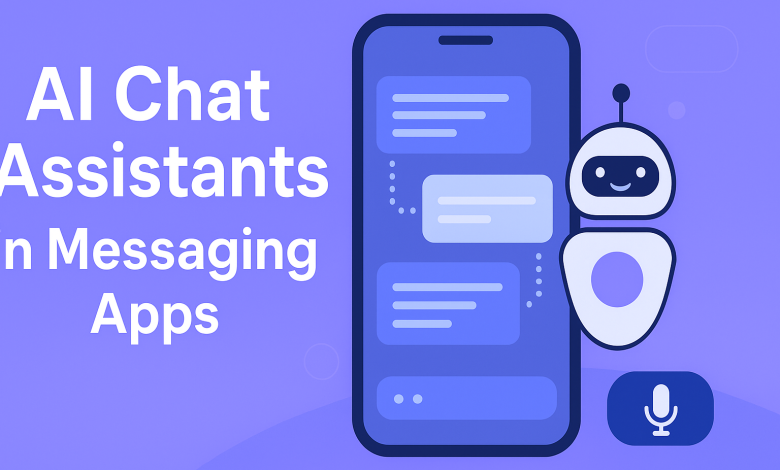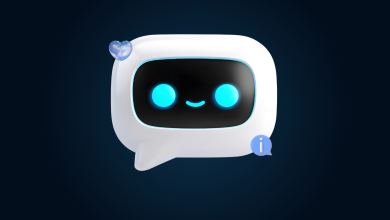
Artificial intelligence is steadily transforming the way we communicate. Once limited to predictive text and voice notes, messaging apps are now entering a new phase ,AI-driven chat assistants and intelligent widgets. These new tools promise to make chatting faster, smarter, and more context-aware.
Apps like WhatsApp and Messenger have already started integrating AI for tasks like automated replies and smart captions. But beyond official releases, the innovation curve often moves faster in modified apps such as GB WhatsApp, where developers experiment with new features long before they become mainstream.
The emergence of AI-based assistants inside messaging platforms represents a broader evolution ,from passive communication tools to interactive digital companions.
What Are AI Chat Assistants and Widgets?
AI chat assistants are integrated bots that can understand, summarise, and even act on messages. Widgets are compact interfaces that surface key functions ,like quick replies or AI summaries ,right on your phone’s home screen or notification bar.
Together, they create a seamless experience where users no longer need to open the app for every interaction. For example:
- AI can draft responses based on your tone and recent chat history.
- Widgets can show highlights from unread messages.
- Voice-based assistants can schedule calls or reminders directly from chat threads.
In essence, AI assistants and widgets bring automation, context, and convenience into a single touch.
Why Messaging Apps Are Moving Toward AI Integration
The rapid adoption of AI tools in communication platforms isn’t a coincidence. It’s driven by three major trends shaping the future of messaging:
- Information Overload – With hundreds of daily messages, AI helps prioritise what matters most.
- Personalisation Demand – Users now expect apps to adapt to their habits, not the other way around.
- Hands-Free Interaction – As voice AI improves, users prefer quick commands instead of typing.
WhatsApp, Telegram, and Signal are exploring AI to assist with summarisation, scheduling, and even emotional-tone detection. For instance, Meta’s “ChatGPT-like assistant” for WhatsApp shows how serious the shift toward conversational AI has become.
GB WhatsApp and Early Feature Adoption
Modified platforms like GB WhatsApp often serve as testing grounds for advanced functionality. While official versions follow strict release schedules, community-driven mods can integrate cutting-edge AI faster.
Some potential AI-driven updates that could appear in GB WhatsApp include:
- Smart Chat Suggestions: AI recommending quick replies or message templates based on context.
- Embedded Translation: Instant message translation using lightweight on-device models.
- AI Status Creation: Generating creative or professional statuses using prompt-based tools.
- Personal Widgets: Custom widgets showing unread summaries, upcoming messages, or daily highlights.
These features make GB WhatsApp a practical tool for users who want flexibility, personalization, and an early glimpse of future WhatsApp functionalities.
The AI Advantage: Enhancing Everyday Communication
AI assistants aren’t just futuristic ,they solve everyday problems.
Here’s how they enhance messaging:
- Faster response time: Predictive AI replies reduce typing effort, ideal for professionals and multitaskers.
- Smart reminders: AI can detect when someone asks you to “send tomorrow” and automatically schedule a follow-up.
- Context understanding: AI distinguishes between formal and informal tones, adapting responses accordingly.
- Task automation: From setting calendar events to searching chats, AI makes apps proactive instead of reactive.
These capabilities create what AI Journ has frequently referred to as contextual computing ,where apps anticipate user needs before users even ask.
Widgets: Bringing AI to Your Home Screen
Widgets might seem simple, but they represent one of the biggest leaps in user convenience. Instead of navigating through menus, widgets can bring intelligent summaries, chat previews, and action buttons directly to the phone’s surface.
For example:
- A “Messages Summary” widget shows unread messages with AI-generated highlights.
- “AI Quick Action” buttons allow sending common replies like “On my way!” or “Meeting in progress.”
- Business users can see daily chat analytics ,message volume, response time, or pending customer replies.
When paired with AI, widgets evolve from static shortcuts into dynamic assistants, learning from how you communicate and surfacing only what’s relevant.
Security, Privacy, and Responsible AI
As AI becomes embedded in messaging, privacy remains a top concern.
Processing messages with AI requires access to sensitive data, making on-device AI a preferred approach.
This ensures your data never leaves your smartphone while still enabling smart summaries or reply suggestions.
GB WhatsApp and similar platforms could potentially implement local AI models that work offline ,maintaining privacy while offering personalization.
However, users should stay cautious and only download apps from trusted sources to avoid security risks.
For readers exploring AI innovation in everyday tech, AI Journ regularly covers the ethical and technical boundaries of AI ,from privacy frameworks to the latest machine-learning breakthroughs.
How This Trend Will Shape Messaging’s Future
AI assistants and widgets represent the next natural step in messaging’s evolution:
from manual chat management to intelligent conversation flow.
The combination of AI, personalization, and modular interfaces could soon enable:
- Multi-app AI assistants that work across WhatsApp, Telegram, and Instagram.
- Predictive conversation tools that auto-draft messages based on past context.
- Emotional intelligence models that adapt tone and emoji use automatically.
These developments will make messaging more human-like ,understanding not only words but also intent.
Conclusion: Messaging Meets Artificial Intelligence
AI is turning messaging platforms into something far greater than chat boxes ,they’re becoming intelligent personal assistants.
For users of modded versions like WhatsApp GB, the next few updates could bring features that merge AI automation with personalization, setting new expectations for convenience and efficiency.
In the coming years, the question won’t be whether your messaging app uses AI ,but how intelligently it understands your life.
As this evolution unfolds, platforms like AI Journ will continue exploring how AI not only changes technology but reshapes the way we communicate, connect, and collaborate.




